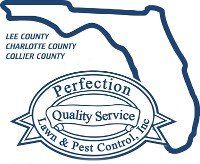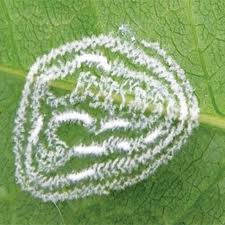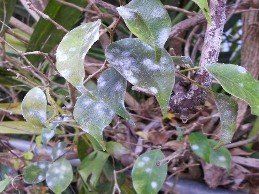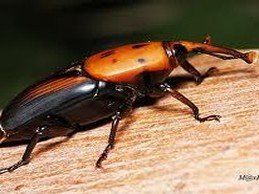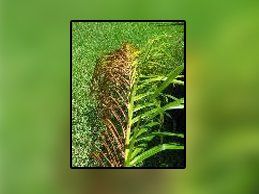Is Your Lawn The Envy of theNeighborhood? It Could Be!
Customer Login
Palm/Tree Threats
Damaging Insects
Spiraling Whitefly
White spirals and a build up of a white, waxy substance on the underside of leaves coats the eggs and immature whiteflies. If populations build up greatly, infested plants can become covered with the white, waxy substance. This can sometimes become weakened and also be disfigured by the black sooty mold that grows on the insect's excrement (referred to as honeydew).
The sticky honeydew (also known as sooty mold) can accumulate on cars, pool decks and patio furniture from infested trees overhead. Honeydew does not damage paint. Once the insect is under control, the sooty mold and honeydew will disappear.
Ficus Whitefly
Ficus whitefly are not flies at all. They are small, winged insects that belong to the Order Hemiptera which also includes aphids, scales, and mealybugs. These insects typically feed on the underside of leaves with their "needle-like" mouth parts.
Whiteflies can seriously injure host plants by sucking nutrients from the plant causing wilting, yellowing, stunting, leaf drop, or even death. It is very important to treat this condition as early as possible to minimize the damage and speed recovery.
Palm Weevil
A number of palm species in Southwest Florida
are being attacked by the palm weevil. Infestation is typically noticed when the palm has been severely damaged; it may contain a large number of larvae without showing early symptoms. The plague tends to enter palm trees via wounds, such as those caused by pruning, since the smell of sap attracts the beetle. Once a tree has become infected it is very difficult to reverse the condition or save the tree.
Ganoderma
Ganoderma, an unpreventable affliction, is a white rot fungus that produces numerous enzymes that allow it to degrade woody tissue. As the fungus destroys the palm wood internally, the xylem (water-conducting tissue) will eventually be affected. Therefore, the primary symptom that may be observed is a wilting, mild to severe, of the fronds. Other symptoms are described as a general decline.
The fungus is spread primarily by the spores produced in the basidiocarp (conk). The spores become incorporated into the soil, germinate and the hyphae (fungal threads) then grow over the palm roots. The fungus does not rot the palm roots, it simply uses the roots as a means of moving to the woody trunk tissue. Removal of the palm is recommended and, because the fungus can remain in the soil, planting a new plam in the same location is not recommended.
Royal Palm Bug
This small arthropod feeds on royal palms which are native to Florida and Cuba. The females deposit eggs in the spring and they hatch in 8 - 9 days. The palm bugs feed on freshly opened leaves causing scattered yellow spots on the lower leaf surfaces. As feeding continues, leaves develop brownish streaks and wilt. Damaged leaves eventually become gray and tattered.
As the lower fronds drop off, the damaged fronds become more evident. If left untreated, eventually all the fronds will look brown and tattered and they will be smaller than normal. Royal palm bugs rarely, if ever, kill palms but their damage is unsightly and deleterious to the palm's health.
Fusarium Wilt
Fusarium wilt is very host specific - primary hosts are Queen palm and Washington Palm. Symptoms normally appear first on the oldest (lowest) living leaves then progressively move upward in the canopy until the palm is killed. Palms often die two to three months after initial symptoms are observed.
This disease is tranfered from palm to palm usually through unsteril pruning tools. Tools should be cleaned and sterilized between each palm trimming.
Perfection Lawn & Pest Control, Inc.
11985 Amedicus Lane, Ft. Myers, FL 33907
Phone: (239) 482-3723
| Fax: (239) 482-6985
11985 Amedicus Lane, Ft. Myers, FL 33907
perfectionlawnandpest@gmail.com
| Phone: (239) 482-3723
| Fax: (239) 482-6985
Content, including images, displayed on this website is protected by copyright laws. Downloading, republication, retransmission or reproduction of content on this website is strictly prohibited. Terms of Use
| Privacy Policy
